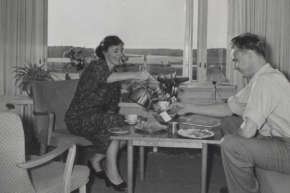History comes alive – From the engine logbook of harbour tugboat Aura and events in Turku in 1928

16 February 1928 From the engine logbook of Aura
”The ship (harbour tugboat Aura) was inspected with the engine running because the propeller makes the ship vibrate and the boiler has leaked often and this time it has held for 4 hours.
It is assumed that the reinforcement plate of the sternpost is the cause for that and also for the vibration of the ship. The ship was inspected by Harbour Master Nyman, Captain Skoström and engineers Salen, Törnroth and Eklund, and they decided that the ship will be docked.
When the ship was docked, it was inspected and observed that ice** had worn the sternpost and the aforementioned plate shiny, and it was decided to burn off the edges of the reinforcement plate. Ice was broken at the mouth of the Crichton-Vulcan Oy* shipyard. The ship was docked.”
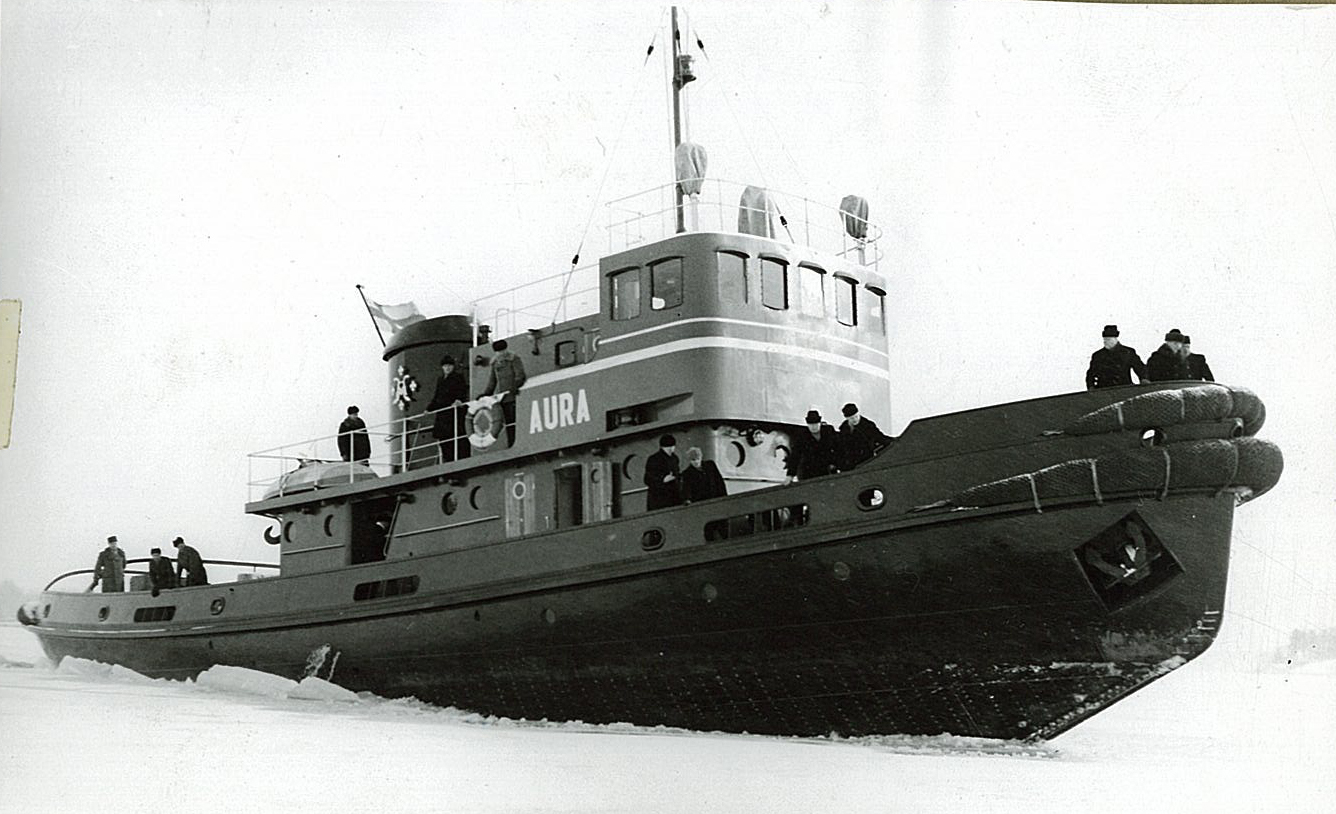
* Based in Turku, Ab Crichton-Vulcan Oy was established in 1924 when two shipyard companies in Turku, A. B. Crichton on the west bank of the River Aura and Ab Vulcan Oy on the opposite bank merged.
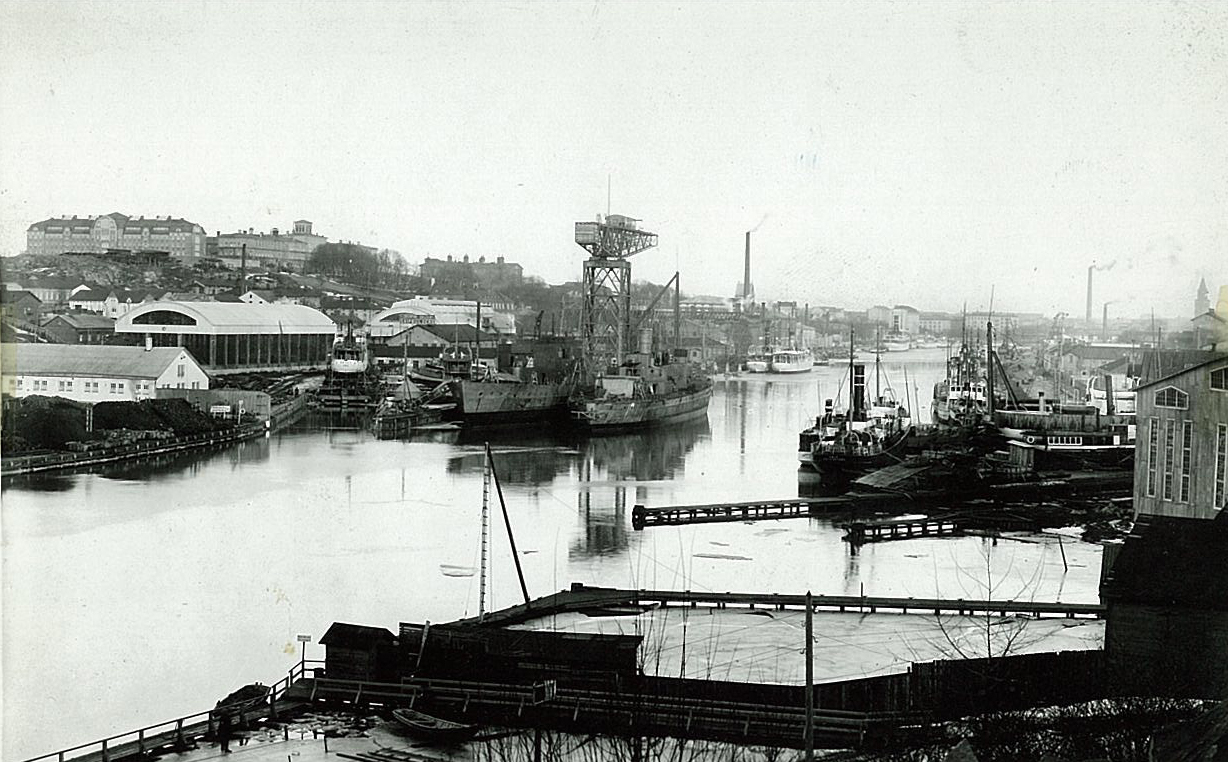
The shipyard built, among others, submarines Vetehinen, Vesihiisi and Iku-Turso from 1927–1931 for the Finnish State. Armoured battleships Väinämöinen and Ilmarinen were built at the shipyard from 1928–1930. A total of 29 ships were built for Finland’s eastern neighbour county Soviet Union in the 1930s, including tugboats and two cargo ships.
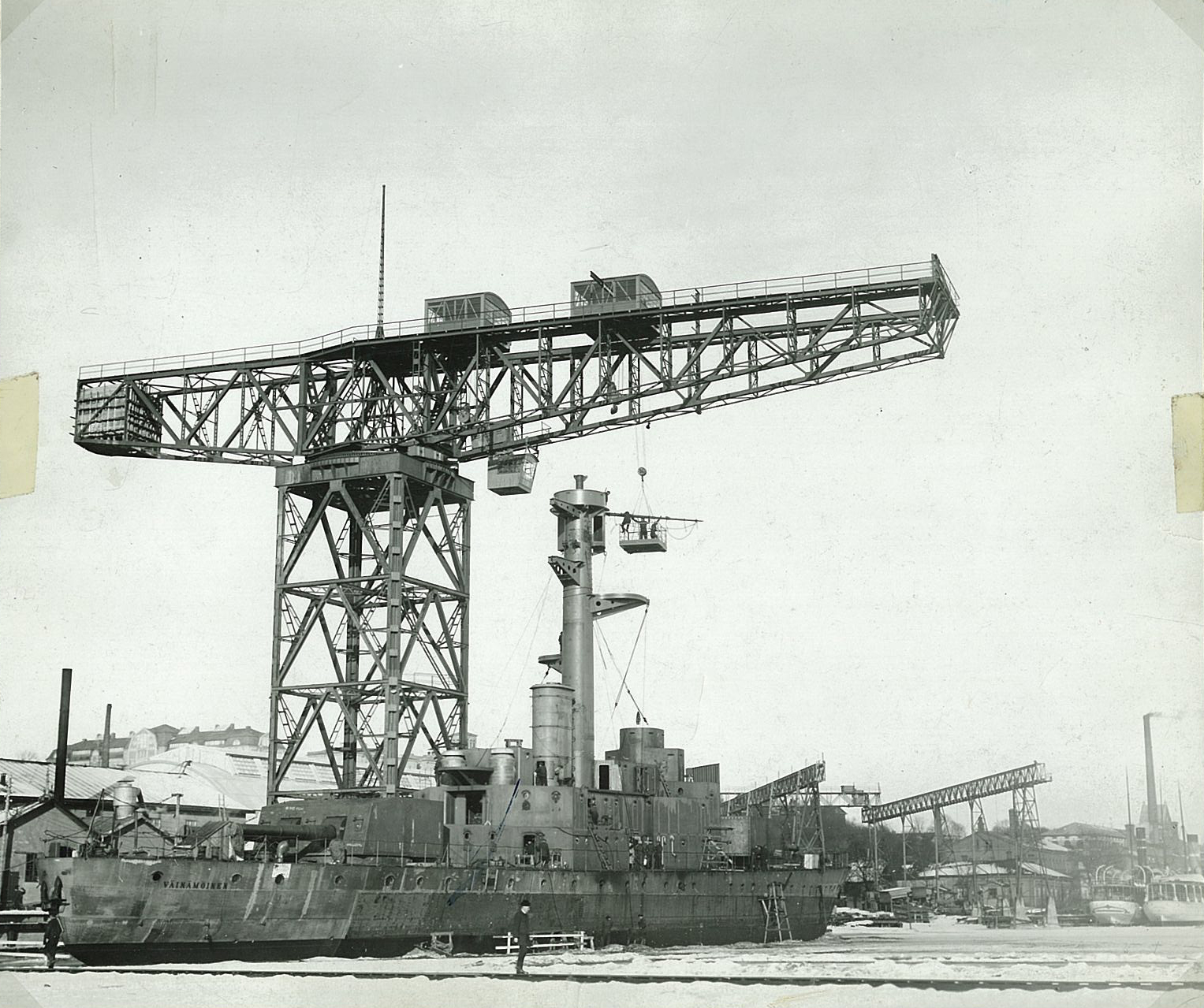
Helsinki-based company Kone- ja Siltarakennus Oy owned the majority of the company’s shares at the turn of the 1920s and 1930s. The shipyard company was merged into Ab Wärtsilä Oy in 1935 in the most significant business acquisition implemented in Finland during that decade. The name Crichton-Vulcan was used until 1965 when the shipyard was renamed Wärtsilä Turku shipyard.
** The average temperature in Turku in February 1928 was approximately -13 degrees. Already on 29 January, lightship Äransgrund had left its position due to ice barriers, after which the sea traffic to and from Helsinki had been routed through the archipelago along a fairway opened by ice-breakers. Now the last ships were taken out, the very last one was not escorted by an ice-breaker until 19 February, when sea traffic ended. After that, sea traffic was only maintained to the country’s two wintertime ports, Turku and Hanko, with the help of ice-breakers.
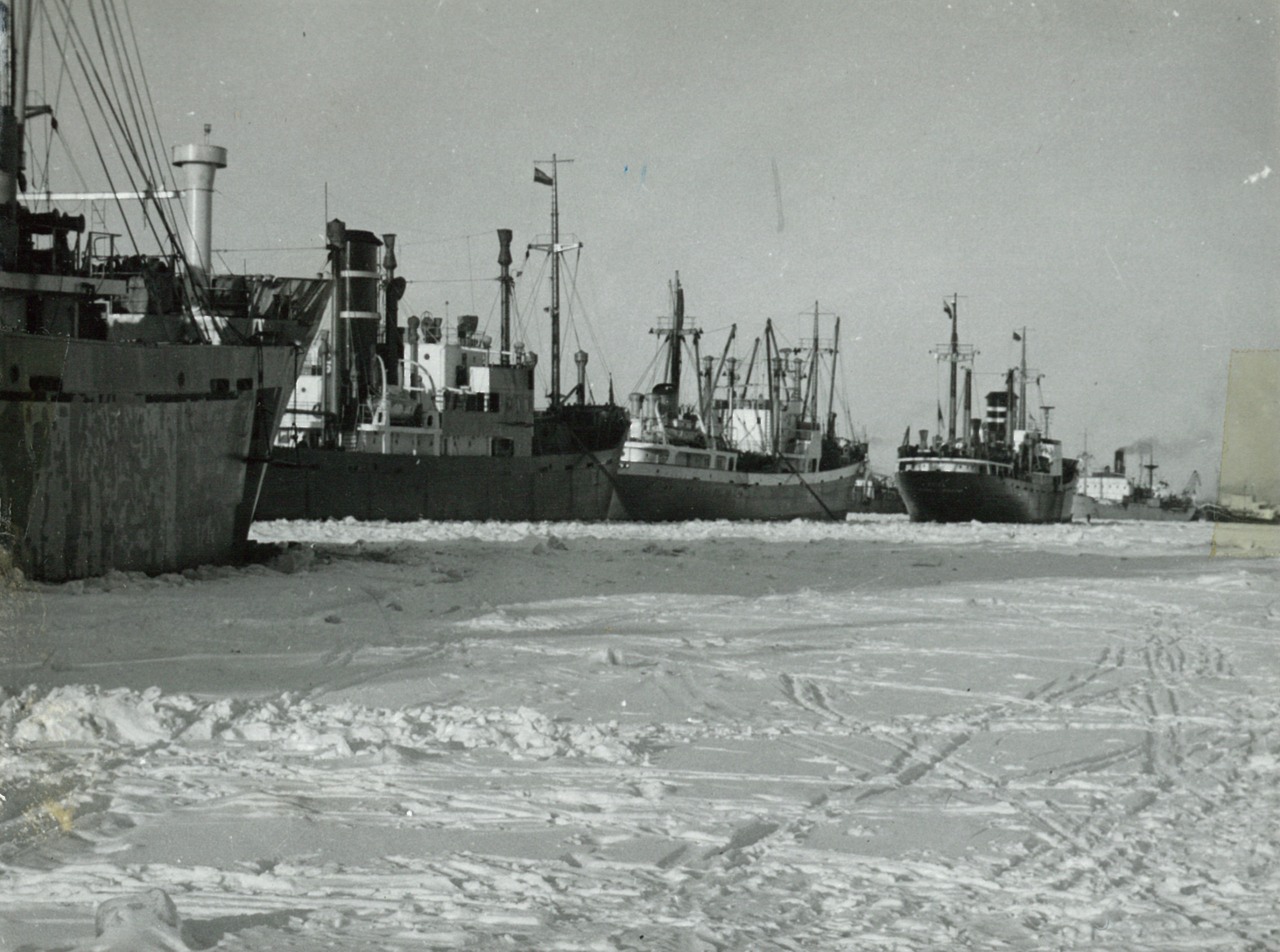
16 February Turku City Council
The meeting of the Turku City Council, held at the City Hall on 16 February 1928, discussed item no. 21 on the agenda, the request of the Port Authority to be allowed to exceed certain appropriations.
“Regarding the appropriations granted for use by the Port Authority, the port treasurer’s office may present the following to the Port Authority: of the appropriations included in the expenditure and income regulation in 1927, the following have turned out to be too small and will be exceeded by the end of the year.”
It is suggested that one reason for the exceeding is that the membership fee of the Finnish Port Association has increased more than budgeted. The membership fee is paid based on the average net register tonnage of the ships that have called in the port during three previous years. This average was calculated as 680,000 tonnes. In reality, the average rose to 686,550 tonnes, so the membership fee increased to match the higher average. Other reasons presented for the exceeding of the budgeted appropriation included, among other things, the increase in cleaning expenses due to salary raises and additional premises in new buildings. In addition, 2,500 Finnish markka more than stated in the expenditure and income regulation was requested to cover the increased need for pilotage and compass inspection expenditure. The Port Authority proposes that exceeding the appropriation in accordance with the calculation of the port treasurer’s office, Treasurer T. Tähtinen, be covered by the City Council.
Turun Sanomat reports on cancelled Winter Olympics and jazz dance
”The Winter Olympic Games were interrupted in St. Moritz, Switzerland, due to warm weather conditions. Rain, warm weather and poor-quality ice made it impossible to continue the Games”, the special correspondent of Turun Sanomat reported by telegram. “It looks like the organising of the Games has not been performed with the care and diligence required by the prestige of such large-scale games. Seemingly, the skaters of Finland, Norway and Sweden have started their way home embittered and disappointed about the trip that was partially wasted.”
The Winter Olympics comprised of 14 events contested in 8 disciplines. In addition, there were two demonstration sports: military patrol and skijoring.
The small ads in the newspaper advertised e.g. cars running on wood gas displayed and open for testing at the Automobile Fair, as well as various dances accompanied by a jazz orchestra as was common at the time. There was, for example, dancing at the Maaria farmers’ house (arranged by the association of butchers in Turku), moonlight dancing at Pontela in Piikkiö, and a soiree of the Civil Guard in the banquet hall of the Voluntary Fire Brigade.
The office of Turun Sanomat was located at Kauppiaskatu 1 and the editor-in-chief was Urho Toivola.
Things going on in Finland in the late 1920s
Prohibition was an act banning alcoholic beverages that were in force in Finland from 1919–1932. During that time it was not permitted to sell or produce alcoholic beverages in Finland. Home distilling of spirits had been prohibited already earlier, in 1866. The direct consequence of the prohibition was that alcohol was smuggled from outside Finland. Smuggling of pure alcohol quickly generated professional or at least semi-professional smuggling and bootlegging crime in a country that had been quite dry before the Prohibition.
Finland in the 1920s and 1930s was a much more brutal society than the one we have today. The underlying reason was decades of violent exceptional times which climaxed in a bloody civil war that made the human life cheap. News of atrocities was continuously reported in the newspapers in the 1920s and 1930s.
Special attention was directed at the port, known as a “den of vice” by the police. During the Prohibition, a police station was set up in the Kanavaniemi cape. Based on police reports, the life of dock workers on the margins of society included run-ins with the police and drinking at work. In the summertime, dock workers were arrested for illegal use of alcohol and in the winter for disorderly conduct.
History comes alive is a series that tells about past events related to the Port of Turku and the City of Turku.
Text: Heli Kaijansalo
Photos: Gustaf Welin / Turku Museum Centre, Port of Turku / Turku Museum Centre

